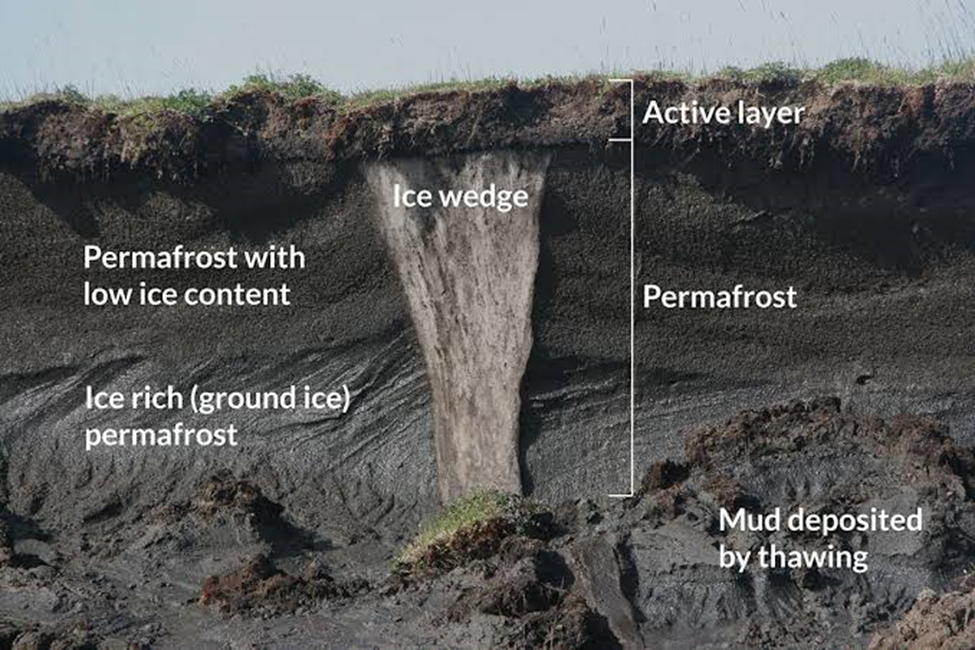Impact of Permafrost Collapse on Himalayan Disasters | 30 Sep 2024
Glaciologists as a part of India's Arctic Expedition, are researching permafrost collapse to assess disaster risks in the Himalayas due to climate change.
- Permafrost is ground that remains frozen at or below 32°F (0°C) for at least two years, commonly found in high-latitude and high-altitude regions.
- Permafrost is a combination of soil, rocks, and sand held together by ice, with frozen soil and ice year-round.
- Global warming leads to permafrost thaw (the melting of permanently frozen soil or rock), causing fluctuations and potential ground collapse, which can affect infrastructure.
- There is a significant knowledge gap regarding the potential link between permafrost and disasters in the Indian Himalayas, including recent events like the South Lhonak glacial lake (Sikkim) bursting.
- Glaciologists aim to fill data gaps by studying permafrost in Arctic regions, leveraging findings for similar Himalayan topography.
- The goal is to create awareness among local communities for early warning systems and long-term infrastructure planning.
Read more: Thawing Permafrost in Arctic and Industrial Contamination

